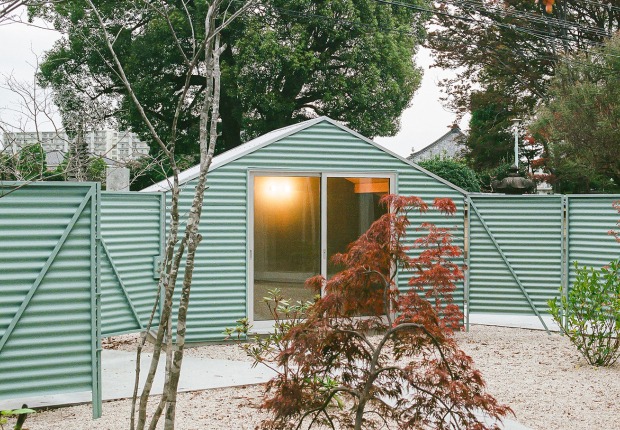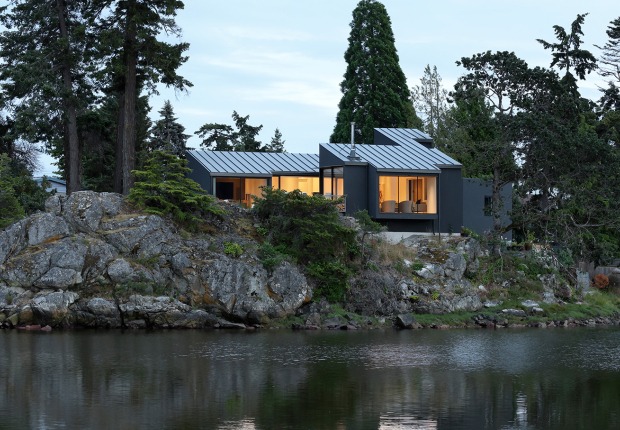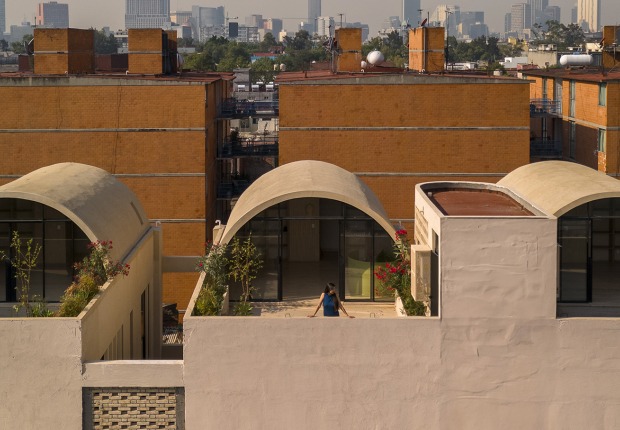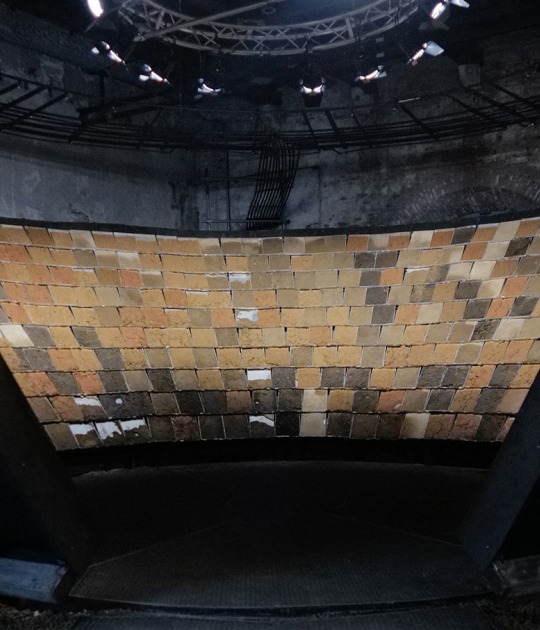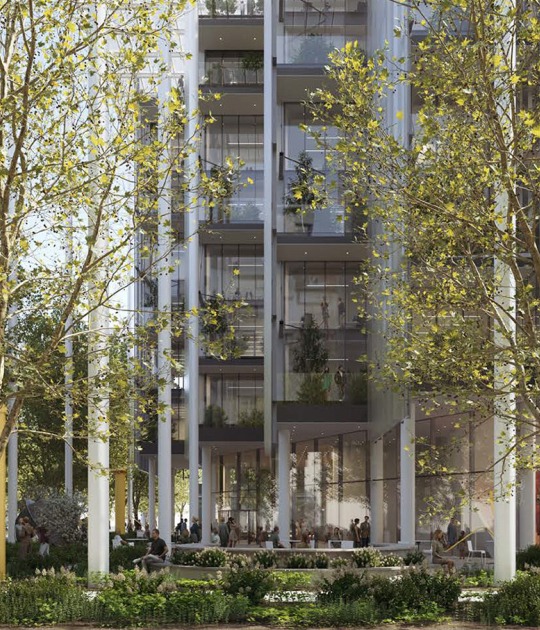Description of the project by Gimeno + Guitart
The construction of the building is articulated around two ideas that have been common throughout the history of sacred architecture:
The monument: the church as a collective experience must also be vindicated as an urban strategy within the city.
The mystery: the church as a place for praying must propose a singular space capable of transmitting transcendental qualities.
The volume of the church stands against the parish center, which acts as a neutral L-shaped background containing complementary functions such as: classrooms, offices or residences, among others. This building retains the urban fabric from the east and north, therefore freeing the public corner of the site next to an open plaza. The horizontality of the soft metallic skinned building which hosts the parish center contrasts with the presence of the church as a rocky polyhedric 60 foot-tall mass that resembles a mineral formation. The church overlooks the boulevard and manifests its presence as a monument within the urban fabric of the Bonavista neighborhood and a symbol for its identity.
This strategic organization is inspired in San Carlo alle Quattro Fontane, designed by Francesco Borromini in 1638. It allows for the shift of the church to the very corner, liberating this building from servitudes derived from the surroundings. In this way, the church emphasizes its presence in the city by occupying the most visible point of the site.
The access to the parish center happens through a private outdoor space that is defined by the void between the two buildings of the complex. This space is limited by the smaller volumes of the sacristy and the side access to the church, both protruding from the concrete base of the nave. This courtyard organizes the access and the circulations between the church and the parish center, and introduces light into the interior rooms of the latter. This void becomes a major realm for exchange and relation.
The access to the church can take place from the open plaza or from the side private entry. In both cases, the access happens through a sequence of spaces that prepare the visitor for the experience in the sacred interior. The main entry to the nave from the plaza takes the visitor through a large opening within the main facade. Large-scale metal doors give way to a compressed space under the choir that precedes the main space of the church. In a similar way, the side entry is designed as a small flared volume that leads to the foot of the nave.
The dramatically high space inside the church is lit from two large hidden clerestory windows that run the whole length of the building. This vertical light stresses the space vertically and promotes a sense of weightlessness ad spirituality in contrast to the hardness of the concrete envelope. Light and scale are characteristic materials of the space and a vehicle to reach the experience of the sacred. A large gilded wood background closes the spatial perspective. The presbytery hosts the altarpiece and the tabernacle aligns with the main axis. The golden background frames a sculpture of Virgin Mary, to whom the church is dedicated.
The material experience of the new space is sparse and assertive. Very precise and concession-less cuts and openings are practiced in the abstract reinforced concrete envelope of the church. The alabaster material used to close off these openings generates a natural, scenographic, and smooth light inside. It is nonetheless the manipulation of the transverse section that floods the space with light from the two long clerestory windows along the nave.
Light, scale, and materiality are in Bonavista the vehicle to the experience of the sacred in a conjunction that identifies structure, form, and space. The emphasis on the sparseness helps achieve a serene and profound place for everyone. This is a style-less architecture that alludes to absolute and universal values and welcomes all who visit the church and parish center in Bonavista.
































